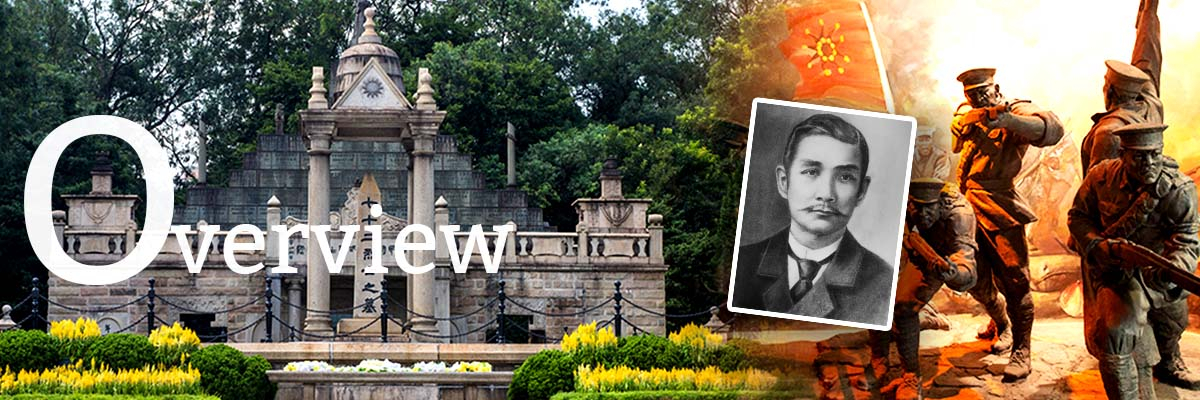Since the 1840 Opium War, the beleaguered Qing government failed most attempts to reform itself and repel foreign invasions. Its corruption, incompetence, and submission to foreign powers could no longer be abided by the Chinese people. A revolutionary faction bent on overthrowing it to save China thus rose. The faction was represented by Sun Yat-sen (孫中山), the leader of the Revive China Society (興中會). Sun founded this revolutionary organisation in Honolulu, the United States, in 1894 and its headquarters in Hong Kong in 1895.
In 1905, riled up by the undignified Russo-Japanese War, Sun struck an alliance with the revolutionary groups the China Revival Society (華興會) and the Restoration Society (光復會) in Tokyo, Japan. The two groups merged with the Revive China Society to form the United League (同盟會), an alliance whose political goal was to “expel the Manchus, restore China, establish a Republic, and distribute land equally among the people”. He soon established Citizens’ Journal (《民報》), the United League’s official publication, in which he set forth the “Three Principles of the People (三民主義, the three principles being nationalism, democracy, and people’s livelihoods)” as his revolutionary guidelines.
The United League proceeded to launch its anti-Qing operation on two fronts: on the propaganda front, it engaged the pro-monachy faction headed by Kang Youwei (康有為) in debates to mold public opinion; and on the military front, it planned and launched relentless armed uprisings to topple the Qing dynasty. During the process, the Chinese people from Hong Kong, Macao, and overseas donated money, and even fought in combat themselves.
Just as the uprisings were seeking a breakthrough after a string of failures, the Qing government’s attempt to nationalise all railways instigated a “railway protection movement”. Quelling the movement left Hubei Province (湖北) drained of its armed forces, giving the revolutionaries in the new army there an opening to revolt. On 10 October 1911, they succeeded in capturing Wuhan (武漢), Hubei. An avalanche of support from a dozen provinces followed as each defected from the central government and declared independence. The Qing regime was swiftly dismantled. The uprisings became known as the “1911 Revolution (辛亥革命)”. The revolution was a monumental event not only for ending the 260-plus years of Qing rule, but also terminated the autocratic monarchy that had ruled China for more than 2,000 years. As such, it is a landmark in Chinese history.








